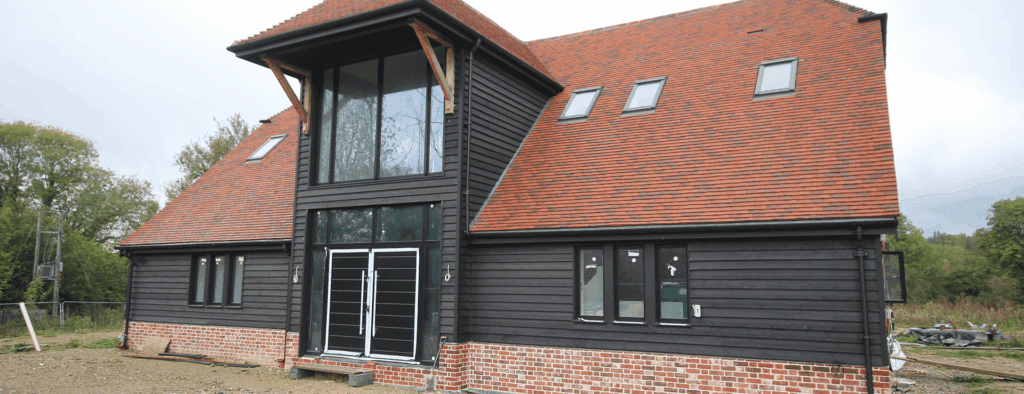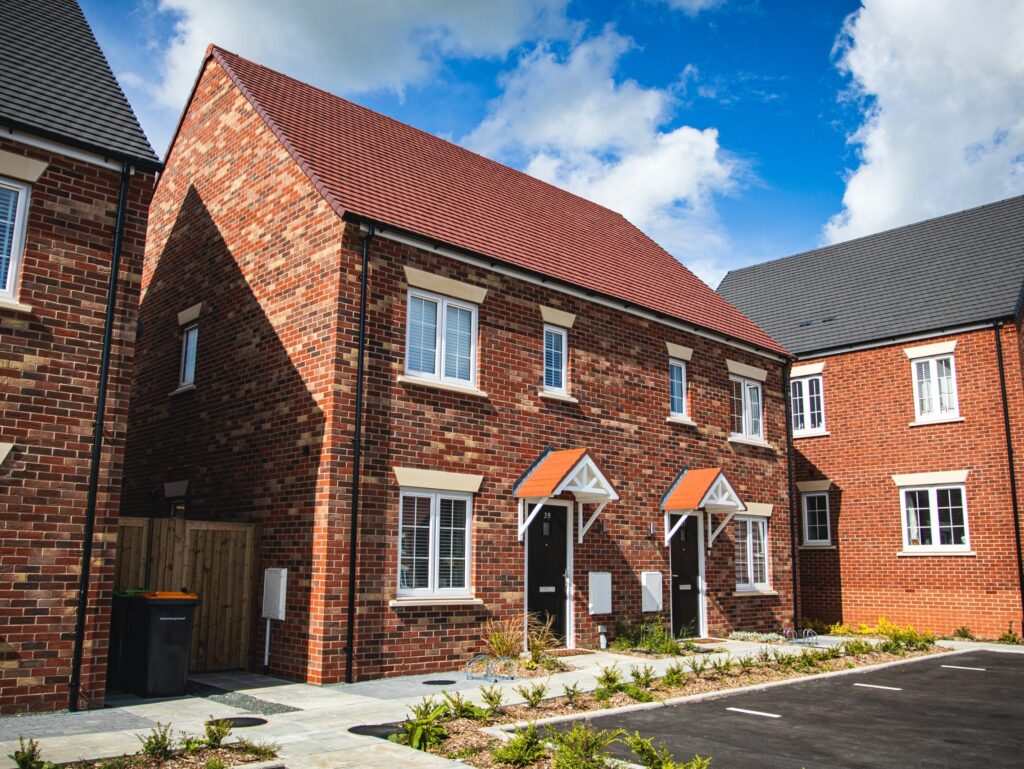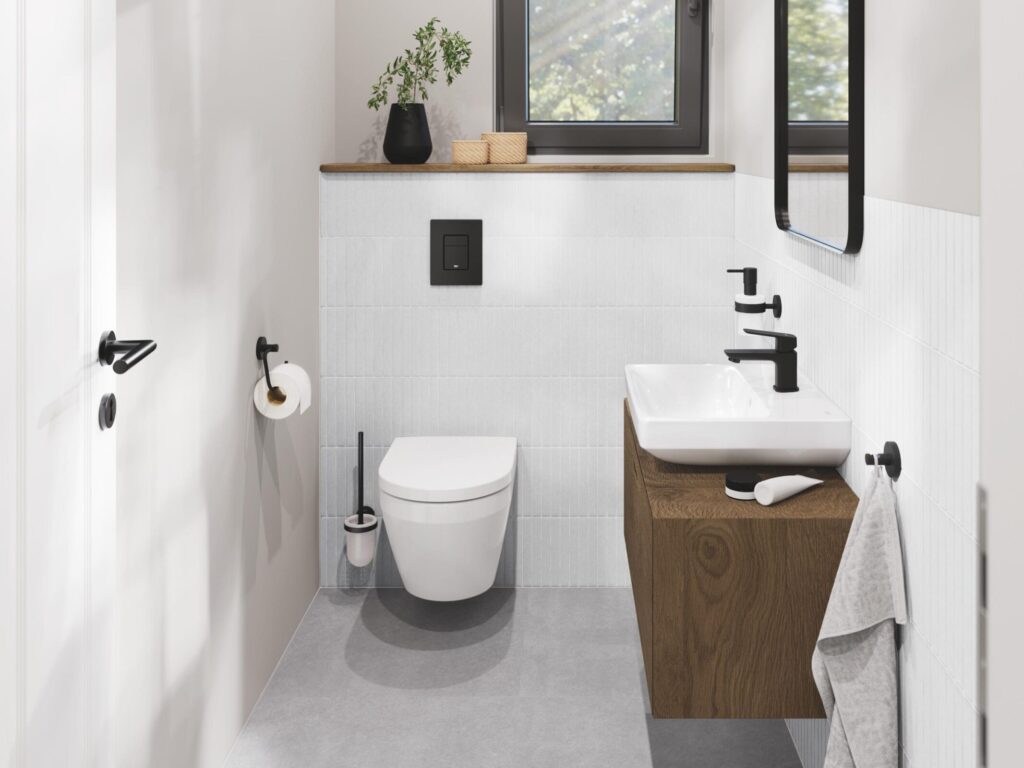Andrew Hayward, Managing Director of Russell Roof Tiles, tells Showhome how UK roofing is influencing US designers
As the house-building market continues to strengthen in both the UK and USA at first glance it would appear that the homes of our American cousins are very similar. But both construction and design is very different – in particular when it comes to roofing.
Leading British roof tile manufacturer Russell Roof Tiles has a sister company in the US, Crown Roof Tiles, who are introducing products developed in the UK that are becoming increasing popular Stateside. (Crown Roof Tiles has operations in Texas and Florida and is part of the same group – Crown Global Equity – as Russell Roof Tiles.)
Looking at size initially, the average floor space for a new build in Britain is 76m2 and in the USA it’s 214m2. General construction is also different; here, brick is most commonly used, however across the Atlantic they are often built, at least partly, from timber. This also makes US homes cheaper to both buy and build as generally wood is a cheaper available material and also requires less skilled labour in construction than brick.
Roofing across Britain is very distinctive and unlike anywhere else in Europe. Many other countries tend to use predominantly one material, but the local availability of raw materials in the UK over the centuries has resulted in a diverse range of roofing styles – looking over the roof tops in the South-East will be very different to in the Pennines. Roofing across the UK is distinctive both in shape, material and colour.
And in the USA the skyline is very different and much less hindered by planning issues, with European and, in particular, Spanish influences reflected in roof styles.
Roofing materials are also very different. In the US, asphalt shingles account for the largest share of roofing materials used, with 57% of the market; this is due to shingles being relatively cheap up-front and being fairly simple to install. In the UK, however concrete roof tiles are the most widely used on around 60%, slates are used at 20% of the total and clay tiles around 10%, the remaining 10% is made of various other materials.
But traditional roof tiles are expected to show the most rapid growth of all roofing materials in the USA in coming years. The global market for concrete and clay roof tiles is projected to grow by 3.3% annually rate to 3.8 billion m2, outperforming most other types of roofing materials. Both concrete and clay tiles are the second most commonly used roofing product, making up one-third of roofing demand, but hold the principal share in roofing dollar sales worldwide.
Because of both geography and climatic conditions, roofs in the USA are approached very differently from the UK. Because of the extreme weather conditions, roof tiles are subject to rigorous testing, the most aggressive of which is the Hail Impact Test. This consists of shooting the tile six times with a two inch diameter solid ice ball at speeds higher than 110 feet/second. This test is tough and aimed to replicate weather conditions that could appear during a tornado or during a hurricane or tropical storm – not something the UK usually experiences!
In many states having a home built with roof tiles as opposed to asphalt shingles often means that homeowners also benefit from reduced property insurance, by as much as 25%.
Asphalt shingles are generally not as resistant to hail and dramatic temperature changes and only last an average of 15 years. Roofing materials also have to withstand heat and many more hours of sunshine – in many Southern states than the UK. Another result of the extreme weather conditions is that the pitch of a roof may also need to have a greater incline.
So installation, sustainable issues, architecture and climatic conditions across the USA all influence the specification of roofing materials.
In the UK sustainability continues to be important to new home developers. Despite concrete roof tiles having first been developed in the 19th century they are still seen as a relative newcomer. In fact, concrete was first widely used in the Roman Empire. The Coliseum was built largely of concrete and the dome on the Pantheon is the world’s largest unreinforced concrete dome. After the fall of the Roman Empire, widespread use of concrete became rare until the technology was re-pioneered in the mid-18th century. Today, concrete is in fact the most widely used man-made material.
Concrete roof tiles first gained a real foothold in the market following the post war housing boom, where manufacturers invested heavily in automation. Concrete tiles now account for around 60% of the market and are used widely as a standard material across the UK.
Clay tiles are often seen as a more environmentally friendly product, as opposed to concrete, but when looking at the whole manufacturing process and comparing the entire process concrete is in reality more sustainable. Sustainability as we all know continues to be a major issue in construction, particularly in house-building.
The requirement of roofing not only differs by climate in each part of North America, but also aesthetics, as local authority planning does not dictate the look of a property. The roof sets the architectural style of a house or project. Roof tiles are often viewed as particular attractive as they are both European and there is a current trend for tiles being a more contemporary option for American homes. Concrete roof tiles are also available is such a wide variety of colours and profiles making them increasingly popular.
The ‘Thin Leading Edge’ (TLE) concrete roof tiles are one of the fastest growing products in the UK, and are seen as having both a contemporary look but both sustainable and durable enough to withstand hail impact testing in the US too, performing better than local products that are 25% heavier.
As the name suggested these TLE tiles give the roof the natural appearance of slate and have a thinner profile than you would normally expect from concrete.
Russell Roof Tiles was one of the first manufacturers to market with its TLE – responding to UK local authority planning requirements for a thinner profile. Russell Roof Tiles now has four TLE products in total: Galloway, Lothian, Polden and Moray, which are produced in 13 shades. Thin Leading Edge tiles were created to be approximately half the thickness of standard concrete tile and are on average are 50% less than the cost of most slate roofs.
Crown Roof Tiles has just launched the Galloway TLE, an interlocking roof tile with the appearance of slate when laid half broken bonded, and is a hugely innovative product for the US market.
Both new build and refurbishment are growing markets for concrete roof tiles and new products. Interestingly in many US states existing homeowners treat re-roofing just like another renovation project, something which is rarely seen in the UK. Overall re-roofing activity accounts for the larger share of roofing demand in the US, totally 81% in 2014. A new roof not only gives a home fresh appeal, but choosing a new style of roofing – such as tiles gives it a completely new look. In Florida in particular the sunshine causes huge weathering issues and discolouration and homeowners are frequently re-roofing looking for a brighter and deeper colour. The UK as a whole averages 1493 hours of sun a year, compared to 2927 in Florida.
As the US recovers from the housing market collapse that began in 2006 and caused roofing demand in the country to plummet, Crown Roof Tiles is responding with innovation. With the positive market conditions in the US Crown is investing in both manufacturing plant and new product development – assisted by its British counterpart Russell Roof Tiles.
Homes in the US may be larger, be constructed differently and have a huge range of styles and influences but both are benefitting from manufacturing innovation developed in the UK.
www.russellrooftiles.co.uk












